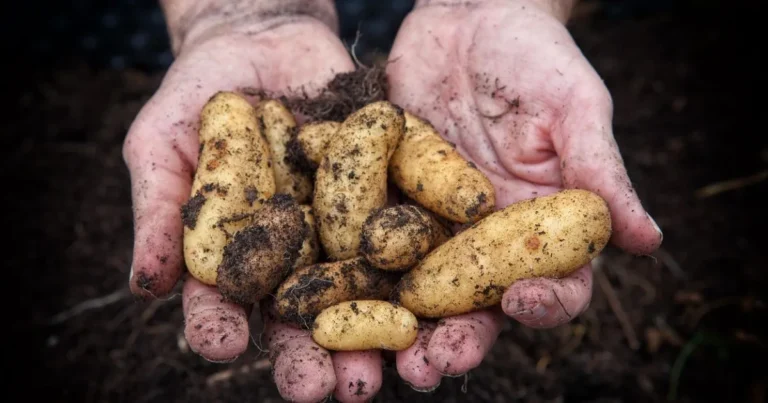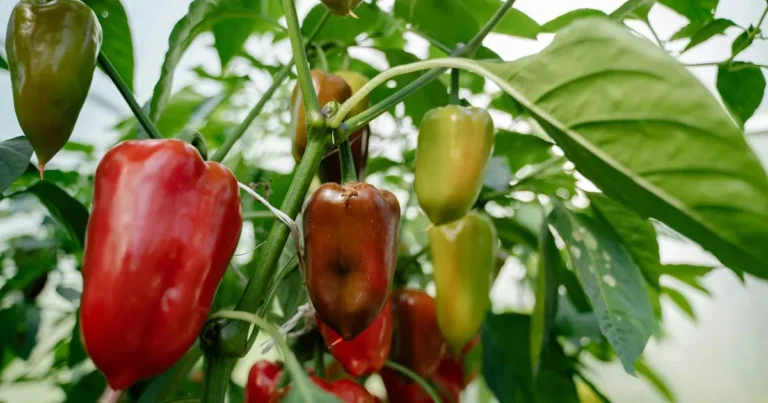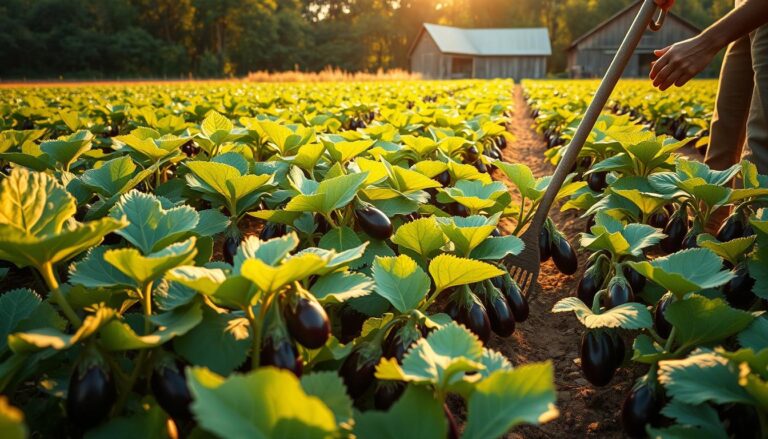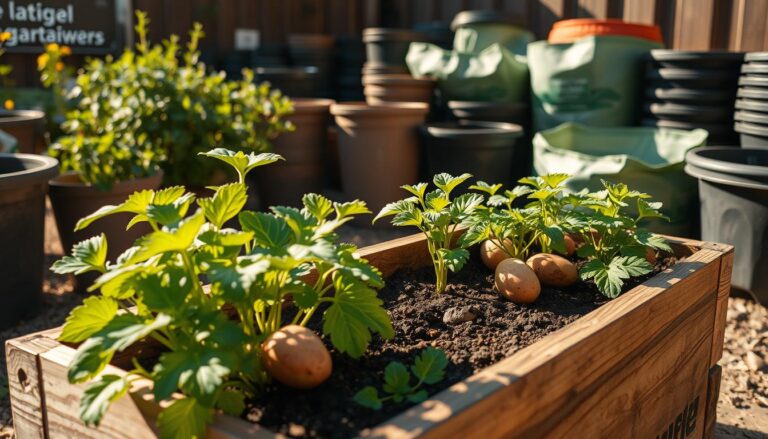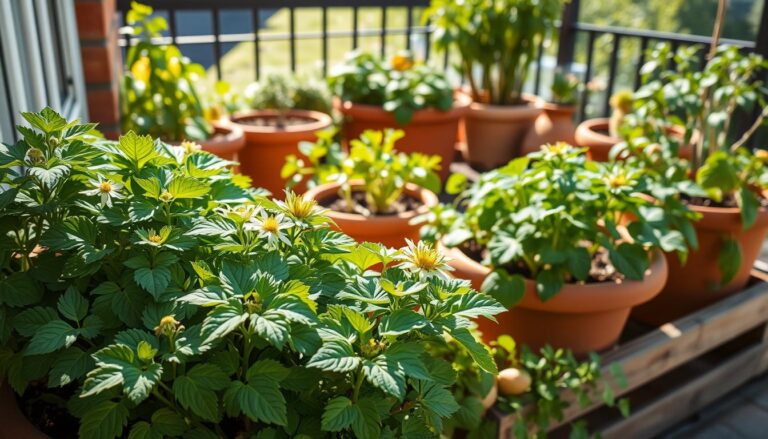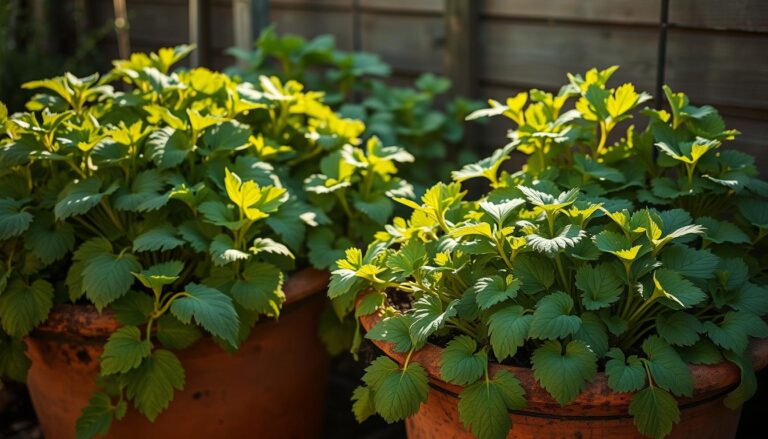How to Grow Potatoes in a Container: A Beginner’s Guide

Table of Contents
How to Grow Potatoes in a Container
Growing potatoes in containers is a fantastic way to get a lot of potatoes, even if you don’t have much space. You can grow them on a balcony, patio, or even inside, as long as you have the right stuff.
Container gardening for potatoes is flexible and can be very rewarding, especially for new gardeners. By following a few easy steps, you can get a great crop of potatoes, no matter your gardening skills.
This guide will show you how to plant potatoes in pots. We’ll cover what you need, step-by-step instructions, and tips for a good harvest.
Key Takeaways
- Choose the right container for growing potatoes.
- Select a suitable potato variety for container gardening.
- Understand the necessary steps for planting potatoes in pots.
- Learn how to care for your potato plants.
- Discover tips for harvesting potatoes from containers.
Why Growing Potatoes in Containers Makes Sense
For those with limited space, growing potatoes in containers is a game-changer. This method lets you grow potatoes even in the smallest gardens or on balconies. It’s perfect for urban dwellers or those with little gardening space.
Benefits for Small Space Gardeners
Growing potatoes in containers is great for small space gardeners. It uses available space efficiently. You can place containers on balconies, patios, or indoors with enough light. This makes growing potatoes possible in areas where traditional gardening is hard.
Advantages Over In-Ground Planting
Container gardening for potatoes has many benefits over planting in the ground. It reduces the risk of soil-borne diseases and lets you control the soil quality better. Plus, you can move containers to get the best growing conditions based on weather and sunlight.
Year-Round Growing Possibilities
With container gardening, you can grow potatoes all year. Just move the containers to safe places during bad weather. This way, you can have many harvests throughout the year, making it very productive.
Selecting the Right Containers for Growing Potatoes
To grow potatoes in containers, you need the right container. It should give your plants enough space and the right conditions to grow well.
Container Size and Depth Requirements
The size and depth of your container are key. A deeper container means more soil and a bigger harvest. Choose one that’s at least 12-15 inches deep for the tubers.
Material Options: Plastic, Fabric, and Wood
There are many materials for growing potato containers: plastic, fabric, and wood. Each has its own benefits:
- Plastic Containers: They’re light and easy to clean but can get hot.
- Fabric Containers: They breathe, which helps prevent overheating and promotes healthy roots.
- Wood Containers: They look good and last long but need more care.
Drainage Considerations
Good drainage is key to avoid waterlogged soil. This can cause root rot and other problems. Make sure your container has enough holes for drainage.
Creating Proper Drainage Holes
If your container lacks holes, you can drill some. Just make sure the holes aren’t too big to let soil fall through.
Elevating Containers for Better Drainage
Putting your containers on a slight incline helps with drainage. Use pot feet or bricks to do this.
| Container Material | Drainage Capability | Durability |
|---|---|---|
| Plastic | Good, with proper holes | High |
| Fabric | Excellent, naturally breathable | Medium |
| Wood | Good, with proper treatment | High |
Choosing the Best Potato Varieties for Container Growing
To get the most from your container potato garden, pick potato varieties for containers that do well in them. The right choice can greatly improve your harvest.
Early, Mid-Season, and Late Season Varieties
Potatoes fall into early, mid-season, and late season types based on how long they take to grow. Early varieties grow fast, ready in 70-100 days, and are great for containers because they need less space and time. Mid-season and late season varieties take longer but can give bigger yields.
Compact Varieties Ideal for Containers
Some potatoes grow smaller and produce bigger tubers. These are perfect for containers because they save space. Look for varieties known to do well in containers.
Disease-Resistant Options for Beginners
If you’re new to growing potatoes, start with disease-resistant potatoes. These are made to fight off common potato diseases. This means you use less pesticides and care for them easier.
Recommended Varieties for American Gardeners
Here are some top picks for American gardeners:
- ‘Nicola’ – Known for its creamy texture and taste.
- ‘Red Thumb’ – Compact and fights off diseases, perfect for containers.
- ‘All Blue’ – Has a unique blue color and is easy to care for.
When picking a variety, think about your local weather, how much space you have, and when you want to harvest. This will help you get the best results.
How to Grow Potatoes in a Container: Step-by-Step Process
To grow potatoes in containers, follow a few key steps. This guide will help you from preparing seed potatoes to harvesting.
Preparing Seed Potatoes
Preparing seed potatoes is crucial. You need to chit them and might cut larger ones into smaller pieces.
Chitting Process Explained
Chitting means letting seed potatoes sprout before planting. Place them with the “eyes” up in a cool, light spot (around 40-50°F or 4-10°C) for 2-4 weeks.
Cutting Larger Seed Potatoes
Large seed potatoes need to be cut into smaller pieces. Make sure each piece has at least one “eye.” Let them dry for a day or two to prevent rot.
Setting Up Your Container with Proper Soil Mix
The right soil mix is key for your potatoes. It should drain well and be rich in organic matter.
Ideal Soil Composition
A good mix includes compost or well-rotted manure for nutrients. Add perlite or vermiculite for better drainage.
pH Requirements
Potatoes like a slightly acidic to neutral soil pH, between 4.5 and 7.0. Test your soil mix before planting for the best conditions.
Planting Techniques
Start by adding a layer of soil mix at the bottom of your container. Then, place your chitted seed potatoes on top. Cover them with more soil. The depth depends on your container size and potato variety.
The “Hilling” Process Explained
As your plants grow, add more soil or compost around the stems. Leave only a few leaves exposed. This helps more tubers form.
Watering and Fertilizing Container Potatoes
To grow potatoes in containers, knowing how to water and fertilize them is crucial. They need the right amount of moisture and nutrients to thrive.
Optimal Watering Schedule
Potatoes need consistent moisture, especially when they’re producing tubers. Check the soil by feeling the top inch. If it’s dry, it’s time to water.
Water them deeply once or twice a week, depending on the weather. In hot, dry weather, they might need more water.
Seasonal Adjustments
In spring and summer, potatoes grow fast and need more water. As fall comes, the plants start to die back, so you can water less.
Fertilizer Types and Application Timing
Fertilizing your container potatoes is key for a good harvest. You can choose between organic or synthetic fertilizers.
- Organic options include compost, manure, or fish emulsion.
- Synthetic fertilizers give nutrients quickly.
Organic vs. Synthetic Options
Organic fertilizers release nutrients slowly and make the soil better. Synthetic fertilizers work fast but don’t improve soil structure.
Signs of Over and Under Watering
Watch for signs of overwatering like yellow leaves or a mushy stem. Underwatering can make leaves turn yellow or wilt.
Change your watering schedule to avoid these problems.
Troubleshooting Nutrient Deficiencies
If your potatoes show signs of nutrient deficiency, like purpling leaves (potassium) or yellowing leaves (nitrogen), adjust your fertilizing. A balanced fertilizer can help.
By following these tips, you’ll grow great potatoes in containers.
Managing Pests and Diseases in Container Potatoes
Keeping pests and diseases under control is key to a healthy potato crop in containers. Growing potatoes in containers means you must watch out for common pests and diseases.
Common Potato Pests and Prevention
Container-grown potatoes face pests like the Colorado potato beetle and aphids. To stop infestations, use row covers or check your plants often.
Colorado Potato Beetles
The Colorado potato beetle can harm your potatoes a lot. To fight these beetles, try hand-picking or insecticidal soap.
Aphids and Other Insects
Aphids are pests that can hit container-grown potatoes. To keep aphids away, use neem oil or bring in ladybugs.
Identifying and Treating Potato Diseases
Diseases like blight and scab can ruin your crop. Look for black spots or lesions on leaves or tubers to spot these diseases.
Blight Prevention in Containers
To stop blight, make sure there’s air around your containers. Don’t water from above. Use fungicides made for blight.
Dealing with Scab and Other Common Issues
Scab causes lesions on tubers. To fight scab, water consistently and don’t overdo nitrogen.
Organic Control Methods
Organic methods can lower the risk of pests and diseases in your potatoes. Try companion planting, crop rotation, and natural pest control products.
Harvesting and Storing Your Container-Grown Potatoes
It’s time to harvest your container potatoes. Harvesting them is easy. When the plants turn yellow and die, it means the potatoes are ready.
Use a fork to dig into the container carefully. For new potatoes, pick them when they’re big enough. For maincrop potatoes, wait a few weeks after the plants die.
Storage Tips:
- Store potatoes in a cool, dark place with good ventilation.
- Keep them away from direct sunlight to prevent greening.
- Maintain a consistent temperature between 40°F and 50°F.
| Storage Method | Temperature | Humidity |
|---|---|---|
| Cool, Dark Place | 40°F – 50°F | 80-90% |
| Refrigerator | 40°F – 45°F | 90% |
Follow these storing potatoes tips to enjoy your container-grown potatoes for months.
Conclusion
You now know how to start growing potatoes in containers. This is a rewarding experience that brings fresh produce right to your backyard or patio. By following this beginner’s guide, you can enjoy a bountiful harvest of delicious potatoes, even with limited space.
Growing potatoes in containers has many benefits. It improves soil control, reduces soil-borne diseases, and increases yields. With the right container, potato variety, and care, you can enjoy a successful harvest.
As you start your container potato garden, remember to keep the soil consistently moist. Also, fertilize regularly and watch for signs of pests or diseases. With a little care and attention, you’ll be enjoying your homegrown potatoes in no time.
FAQ
What type of container is best for growing potatoes?
Choose containers that are 12-18 inches deep and have holes for drainage. This prevents waterlogged soil. You can pick from plastic, fabric, or wood, as long as they fit the size and drainage needs.
How many seed potatoes can I plant in a container?
The number of seed potatoes depends on the container’s size. Plant 2-4 seed potatoes in a 12-18 inch deep, 2-3 feet wide container.
How often should I water my container-grown potatoes?
Water your potatoes when the top 2-3 inches of soil feels dry. Water every 2-3 days in hot weather, depending on the weather and container size.
Can I grow potatoes in containers year-round?
Yes, you can grow potatoes in containers all year if you have the right conditions. In frosty areas, move containers to a safe spot or use row covers.
How do I know when my container-grown potatoes are ready to harvest?
Harvest your potatoes when the plants start to yellow and die. Dig carefully with your hands or a fork, avoiding damage to the tubers.
Can I use regular potatoes from the store as seed potatoes?
No, it’s best not to use store-bought potatoes as seed potatoes. They may have chemicals to prevent sprouting and may not be disease-free. Buy seed potatoes from a trusted supplier or nursery.
What is the “hilling” process, and why is it necessary?
“Hilling” means adding soil or compost as the plants grow. It covers the stems and encourages more tubers. This increases yield and prevents tubers from becoming toxic.
Can I grow potatoes in containers if I have poor soil?
Yes, growing potatoes in containers lets you control the soil. Use a good potting mix and follow care guidelines, even with poor soil.

